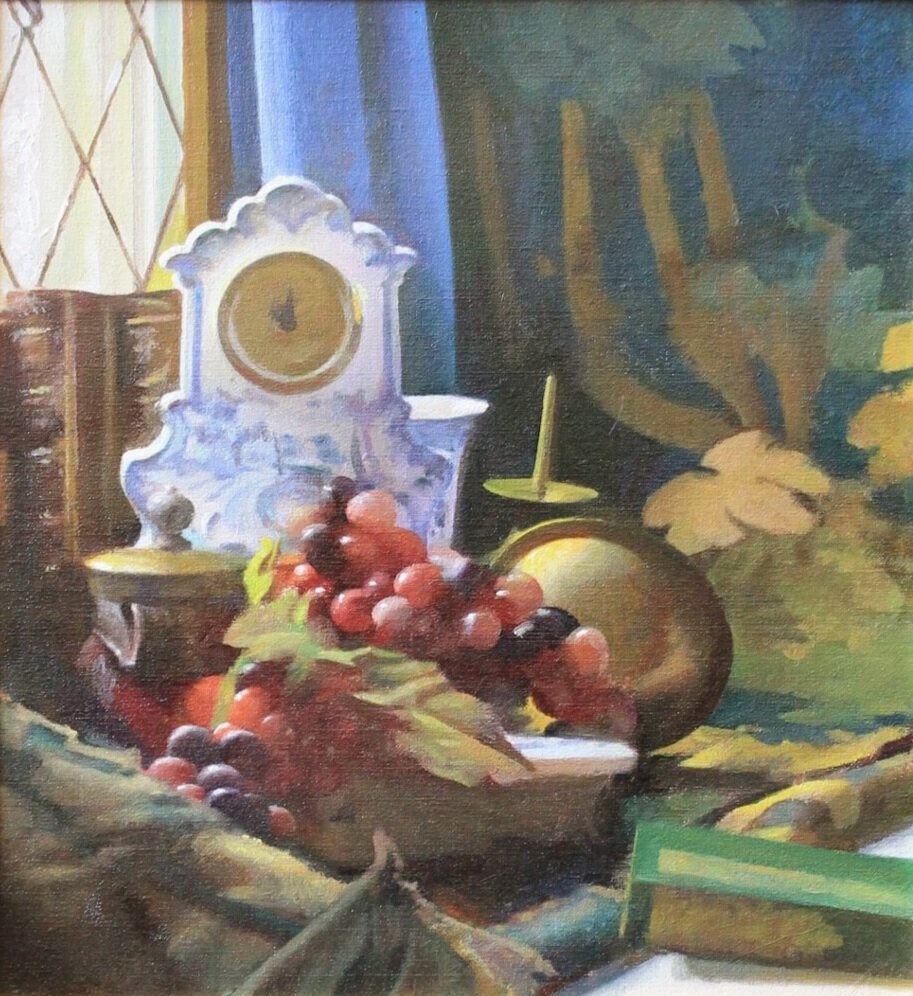Paul Ingbretson is an accomplished professional artist and teacher and a leading modern-day exponent of what became known as the “Boston School” of American art. His background includes several years at the Art Students League of New York with numerous of their top artists but who ultimately organized his artistic approach around the values associated with the “Boston School” as interpreted by the late R. H. Ives Gammell. Paul is equally adept and successful in painting portrait, interior, still life, and landscape; teaches privately in Manchester, NH; and is president emeritus of the prestigious Guild of Boston Artists initially formed by the artists responsible for the evolution of the “Boston School” at the beginning of the 20th Century.
From early childhood Paul was mesmerized by the representational arts beginning with the portraits of Gilbert Stuart and then the great works of the more distant past. As with many young people coming out of the 60's in search of an education that would enable their pursuit of this fascination, the acquisition of the skills necessary to produce similarly wonderful work proved elusive. He searched the West Coast without finding a place to study and, after some false starts, eventually turned to the highly regarded Art Students League.
The introduction to Impressionist light via “broken” color that he received there through Robert Brackman (via Hawthorne) and others profoundly affected him but ultimately the desire to incorporate the finer draughtsmanship which he saw in so much of the work he loved forced him to look elsewhere. He was equally frustrated that professional painters there merely taught classes rather than acting as mentors. Paul's discovery of the “Boston School” trained painter, R. H. Ives Gammell and his subsequent studies in Gammell's French-style Boston “atelier” put him finally in touch with the missing pieces. Unlike the unstructured catch-as-catch-can approach to education in New York, the private Gammell “atelier” systematically taught the tenets of fine painting typical of the training in Paris prior to the twentieth century. Gammell took personal responsibility for the education of those under his tutelage, not just making sure they could draw academically but taking pains to assure that when they left him, they could hang out a sign that said “Painter,” meaning they could professionally handle anything that was asked of them.
Probably the most unexpected result of Paul's work in the Gammell circle was his introduction to the Boston School and through it a connection with so many of the great masters he had so long admired. Unlike the conversation of those he had previously studied with, Gammell's was replete with the great sayings, the wisdom, the “lore,” of his 19th Century European educated teachers. Gammell also directed his students to their writings, the writings of others who knew them, and their masters before them. This information would prove crucial to Paul's complete understanding and mastery of the field. In the spirit of so many of his predecessors, Paul considers it his duty to provide this training to those of the next generation of painters who share his enthusiasm for this wonderful and enduring art.
Paul served as president of the Guild from 2003 - 2014. He teaches the Boston School tradition of painting at his school: Ingbretson Studio of Drawing and Painting.

